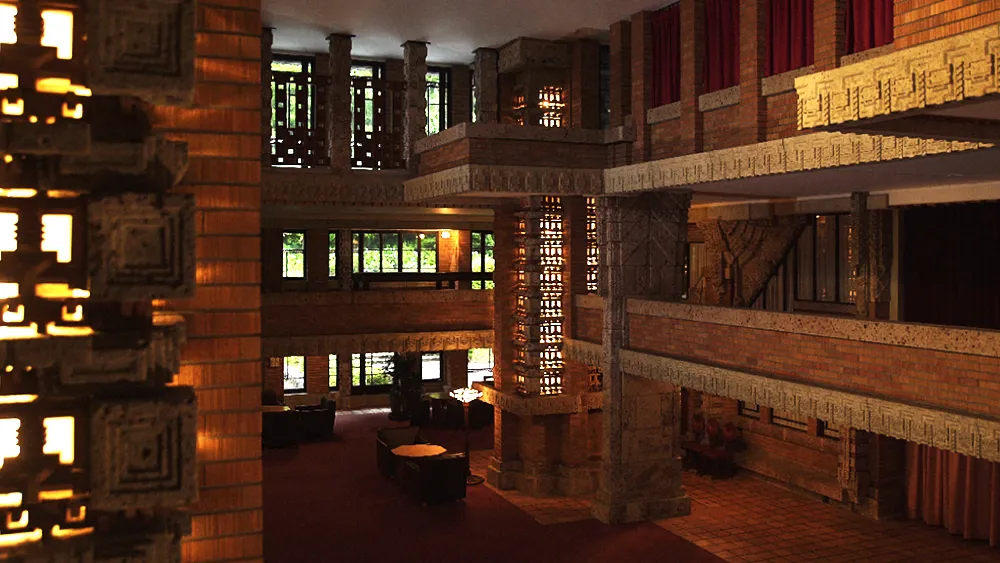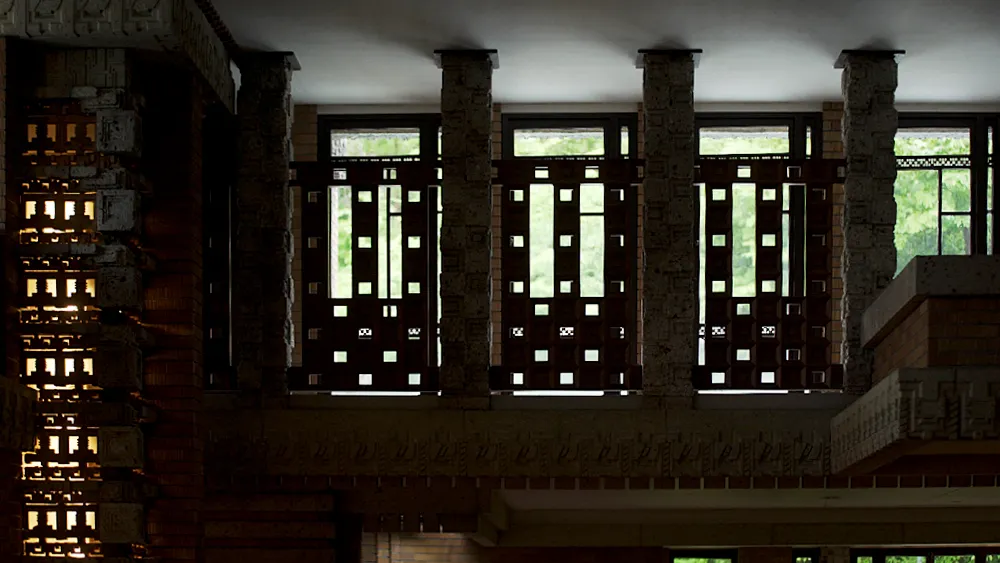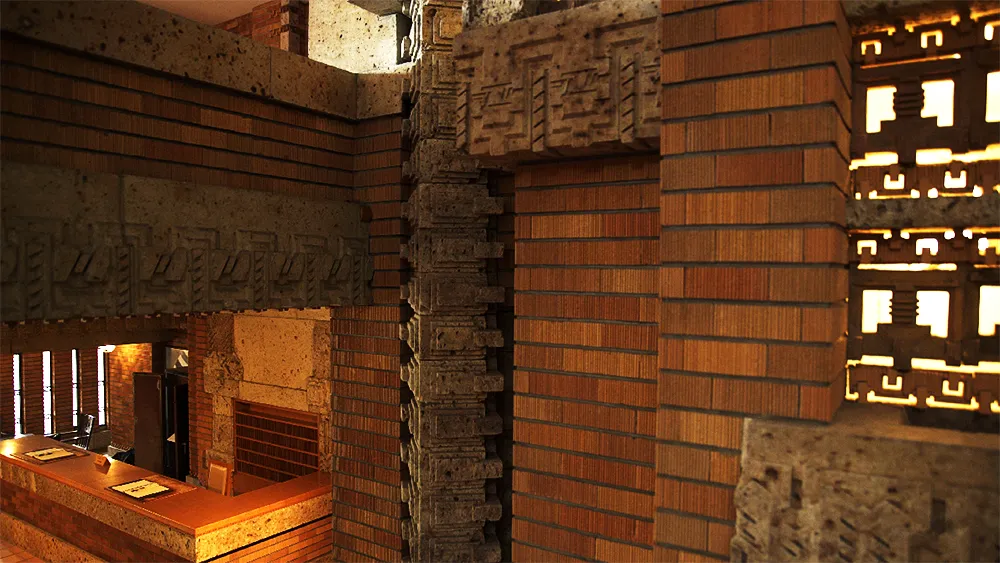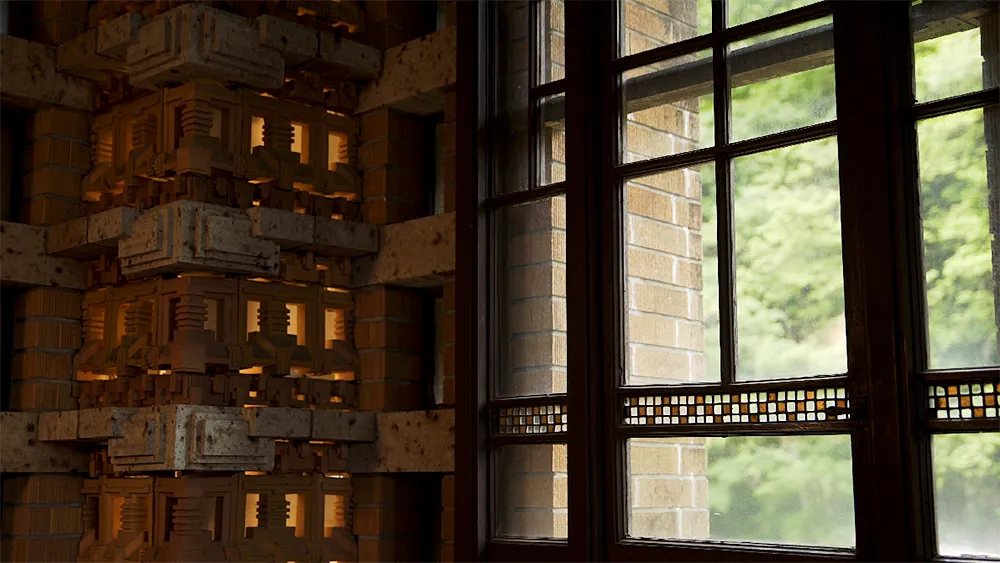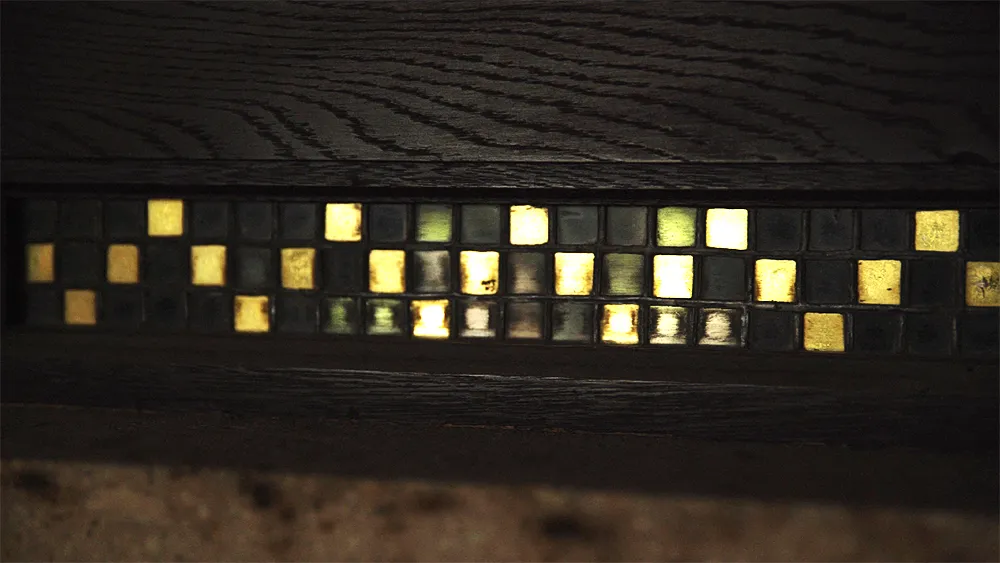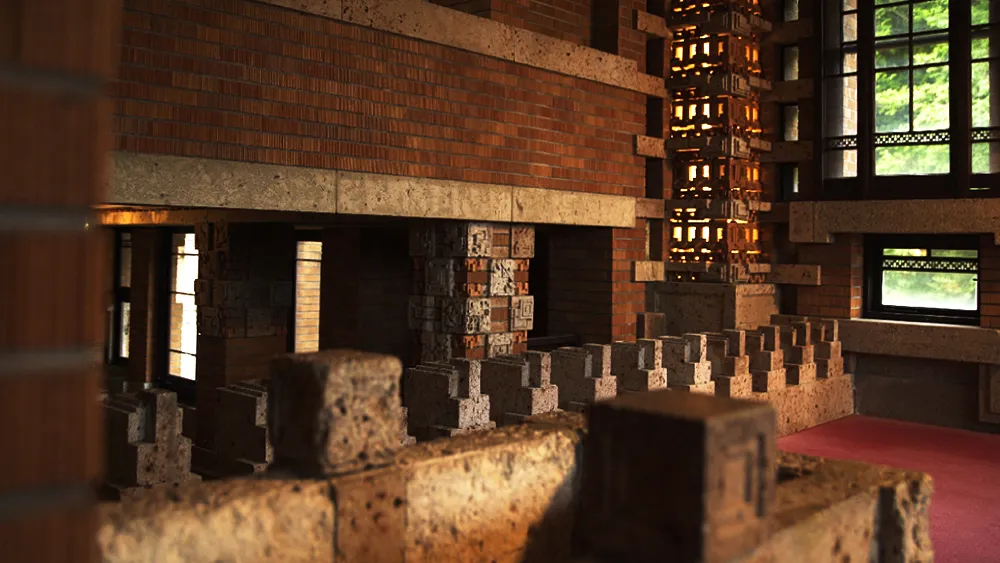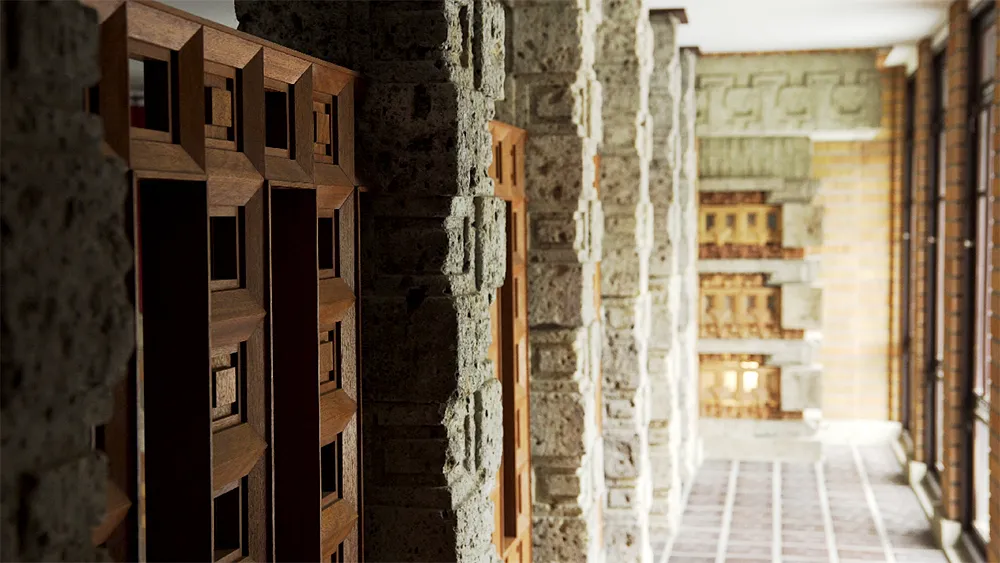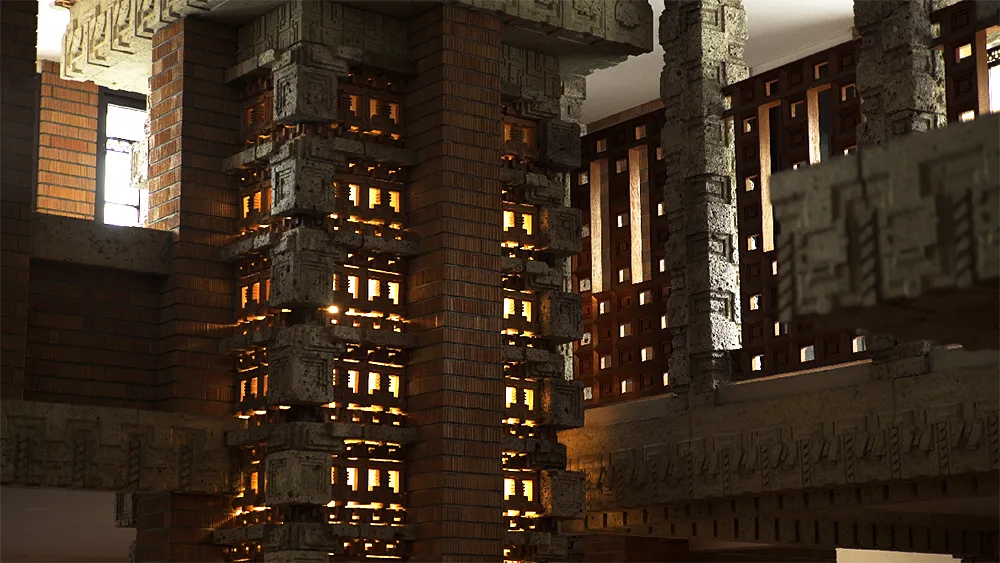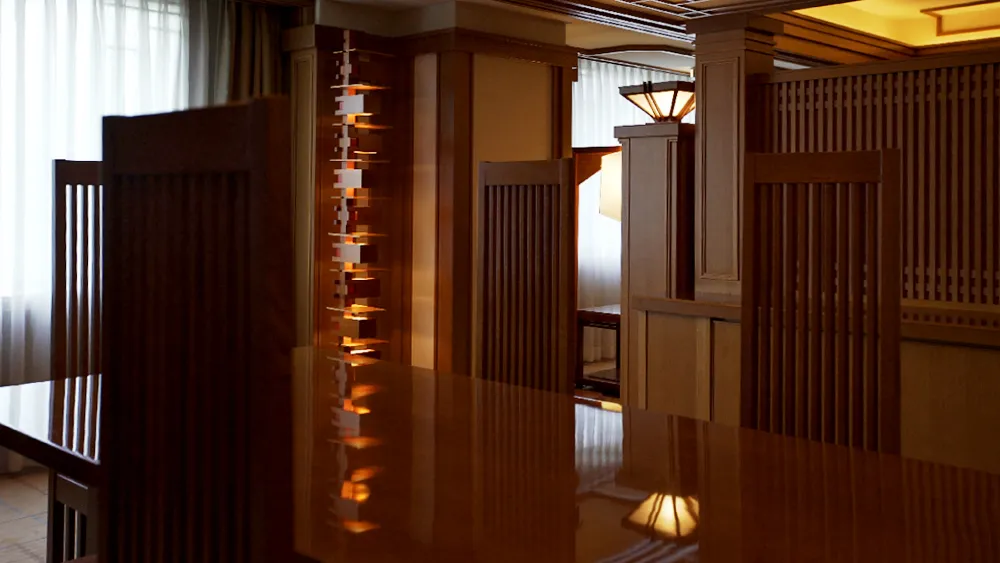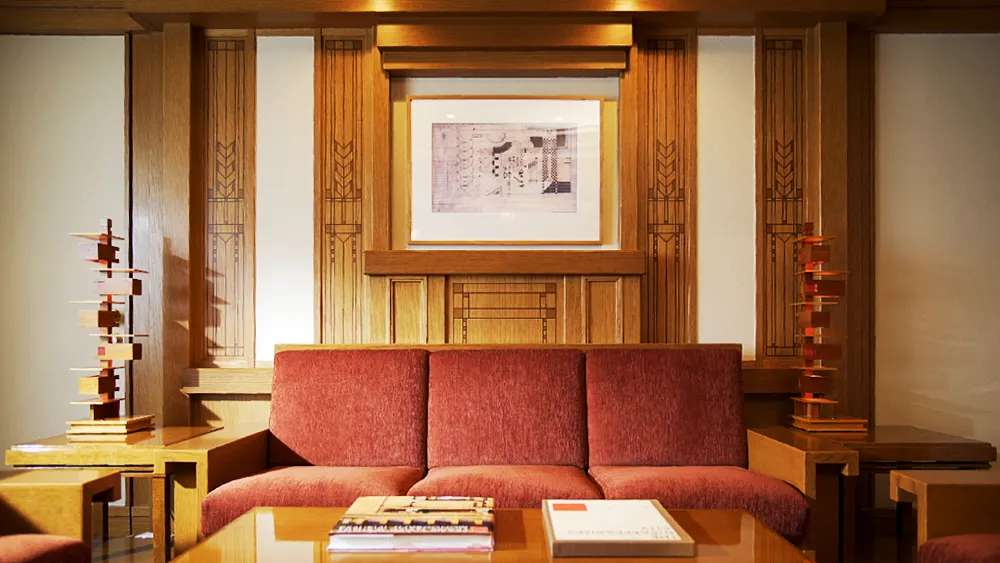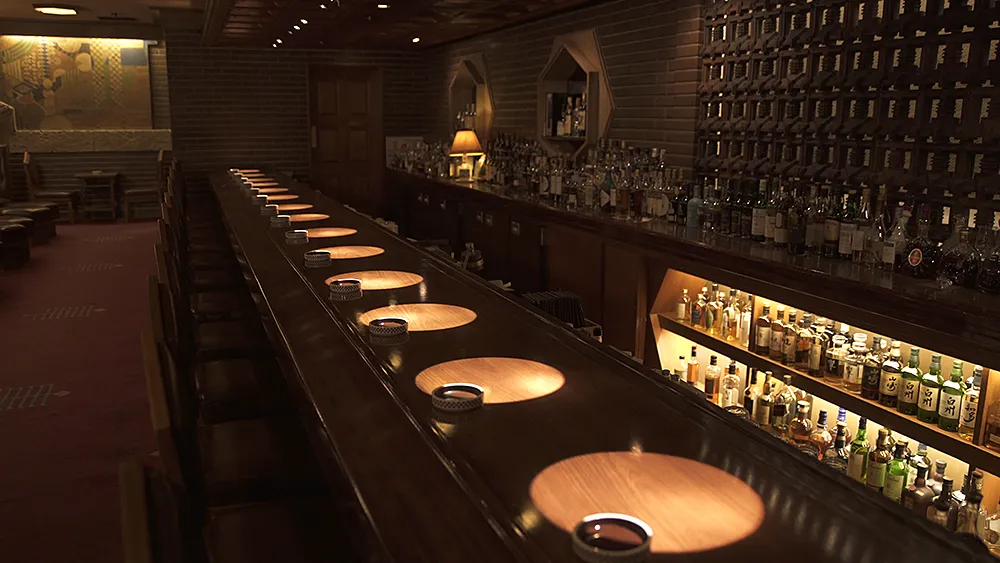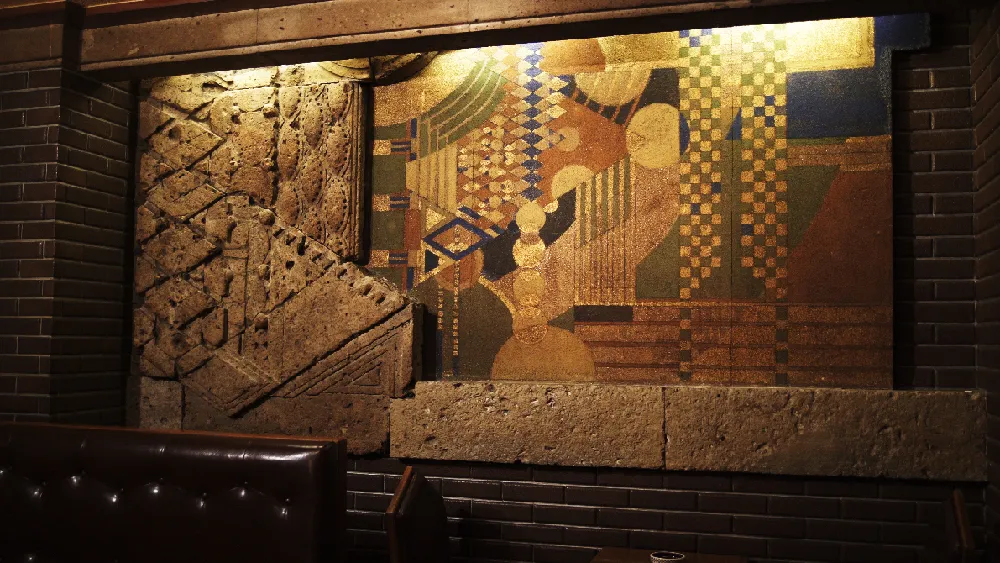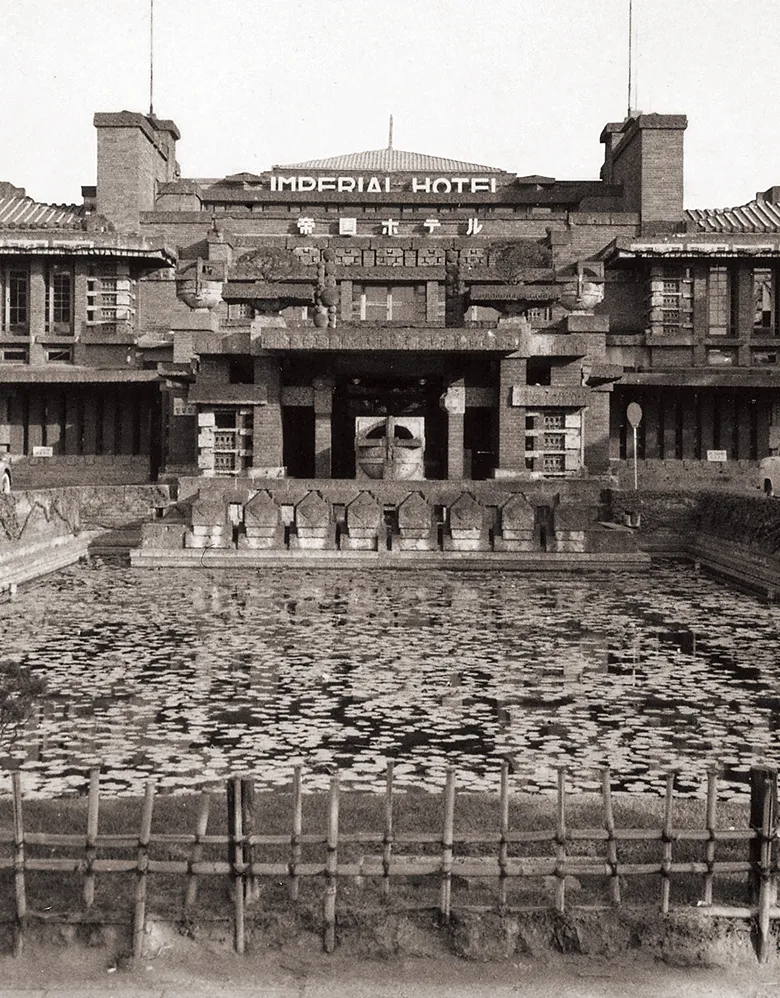
Imperial Hospitality The Wright Imperial (Part 2)
Meiji-mura: Preserving The Imperial legacy
After standing for more than 40 years in the Hibiya district of Tokyo, it was decided that the Frank Lloyd Wright-designed Imperial Hotel in Tokyo, which opened in 1923, must be replaced. In 1968, the Main Lobby of the hotel was dismantled and relocated to the Meiji-mura Museum Village in Aichi Prefecture, where it was painstakingly reconstructed, repaired and preserved for future generations.
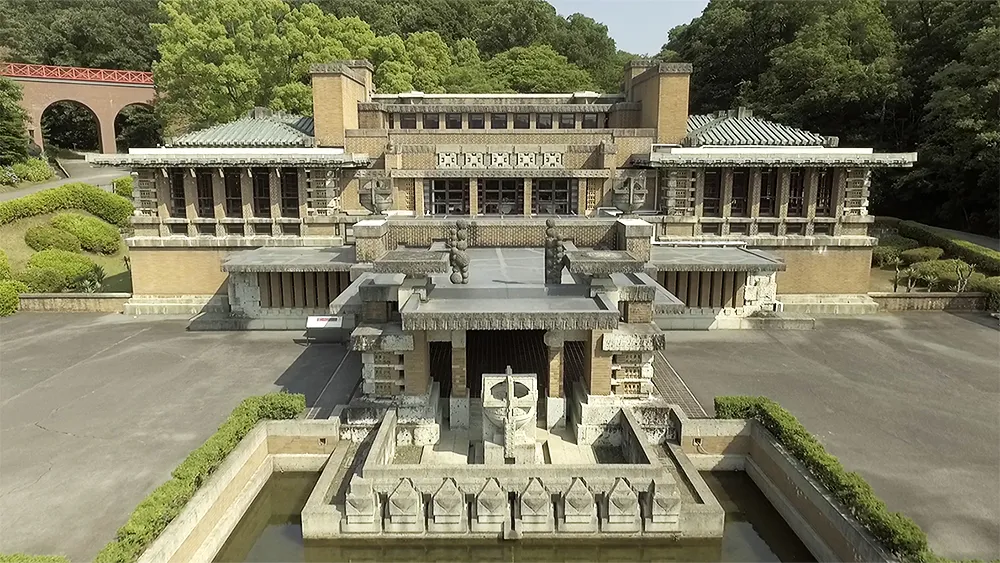
Meiji-mura Museum researcher and archivist Nakano Yuko guides guests through the lobby of The Wright Imperial, sharing detailed insights about the building's unique features. For those who may be unfamiliar with Frank Lloyd Wright, these details offer a deeper way of appreciating his approach to architecture.
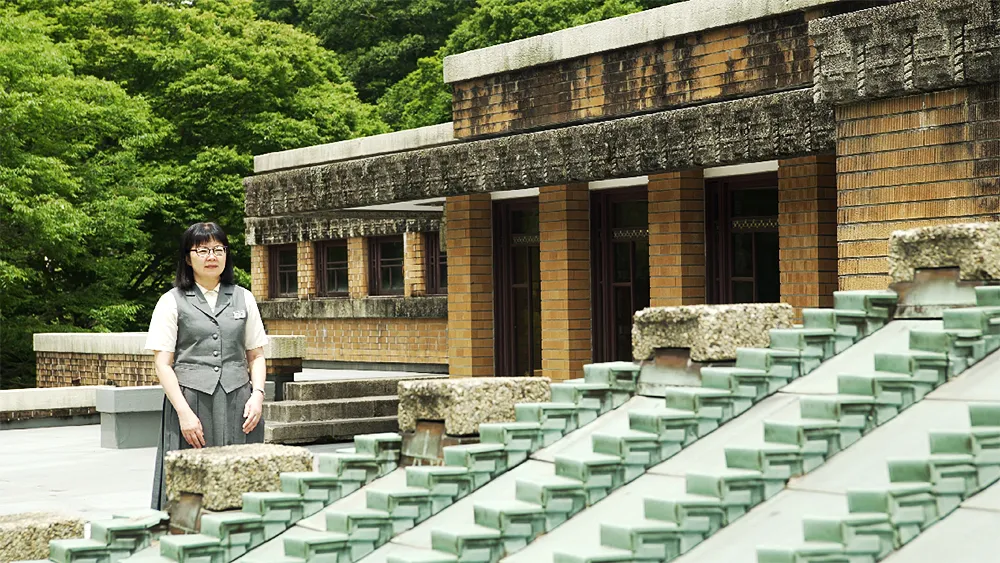
Upon entering the building, the ceiling is quite low and the entranceway is dark. Yet, ascending a few steps into the Main Lobby, the ceiling extends three floors with windows on both sides providing natural light, immediately invoking in the visitor a feeling of freedom and liberation.
The building itself consists mainly of Oya stone and handmade scratch tiles or bricks that were fired in a dedicated kiln built specifically for the construction of The Imperial. Among the brick and stone are ornamental tiles and woodwork containing handmade ornamental glass with inlaid gold accents. Along with the original water features and gold-painted ceilings that sparkled in the sunbeams pouring in through the windows, it is no wonder The 1923 Imperial was also known as “the Jewel of the Orient”.
Another unique feature of The Imperial lobby to which Nakano draws the attention of visitors is that, unlike most modern buildings, materials used on the inside and outside of the building are the same. The materials combined with the multitude of windows, and incorporation of gardens inside the original hotel complex, challenged visitors to question their understanding of inside and outside spaces.
Nakano also remarks on Wright’s use of light, both natural and man-made. In addition to his “ Pillars of Light” and the other countless lamps and lighting fixtures he designed for the hotel, Wright also designed decorative copper fixtures which were attached to the eaves of the hotel’s roof. Shadows cast on the ground outside and the floor inside move as the sun journeys across the sky. Commenting on how his designs even incorporated the minute movements of shadows and light inside and outside of the Imperial, Nakano remarks that Wright was nothing short of a genius.
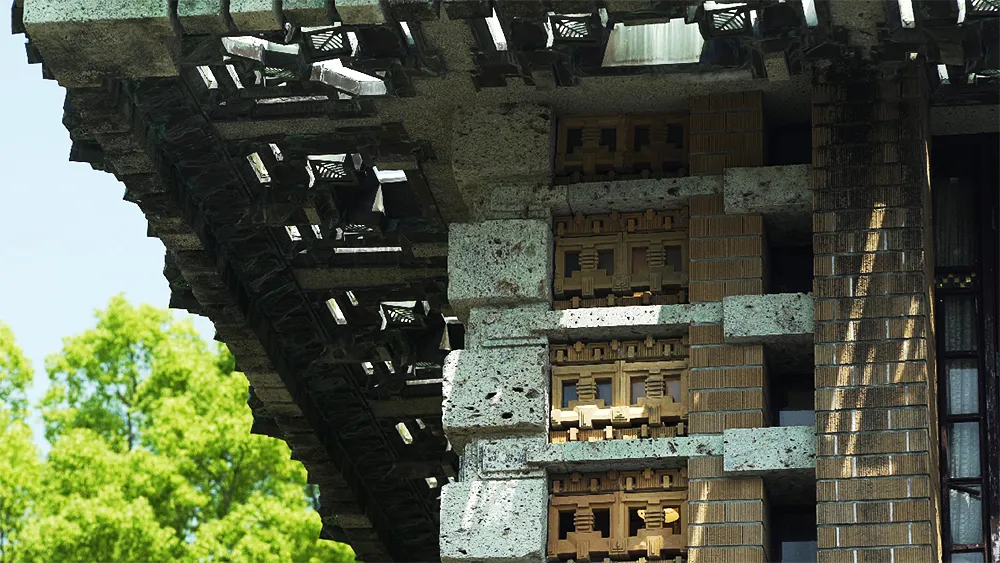
The Exhibition: Imperial Times- Once and Future Legacies-
Nakagawa Takeshi, director of the Meiji-mura Museum, attended the opening of The Imperial Hotel Tokyo’s exhibition Imperial Times- Once and Future Legacies - on June 8, which coincided with the 150th anniversary of Frank Lloyd Wright’s birth. In his speech, he recounted the advice he had received from one of his professors when he was a university student majoring in architecture. “If you want to learn about architecture, visit The Imperial and have a cup of coffee,” the professor had told him. “You will learn more there than you will from my lectures”. Nakagawa told those gathered at the ceremony that it is with a great sense of determination and duty that Meiji-mura is compelled to preserve The Wright Imperial Hotel lobby for future generations to experience.
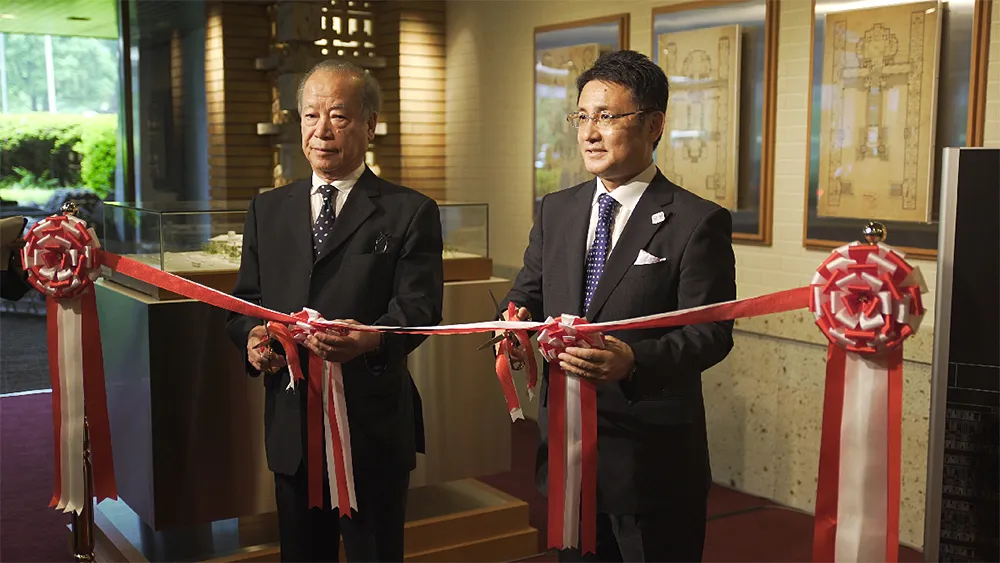
Into the 21st Century: A Hotel for a New Generation
The Frank Lloyd Wright® Suite
The Imperial Hotel, Tokyo has partnered with the Frank Lloyd Wright Foundation to incorporate Wright-inspired motifs, patterns and designs into the furnishings of its current buildings. In addition, a Frank Lloyd WrightⓇ Suite, the only one in the world, is also housed inside the current hotel facilities. The suite features an Oya stone relief, handmade stained glass and oak furniture staged in the symmetry for which Wright was famous.
The Old Imperial Bar
Also housed inside the current hotel is the Old Imperial Bar, which features several original relics from The Wright Imperial, including a relief, terracotta wall and lamps, which welcomes Wright fans from all over the world. Column and video of the Old Imperial Bar.
Wright special edition gifts
In celebration of the 150th anniversary of the birth of Frank Lloyd Wright, the Imperial Hotel Tokyo proudly offers an array of Wright-inspired gifts, menu options and packages.
Photo Gallery
Photo by Naoyuki Matsudaira

